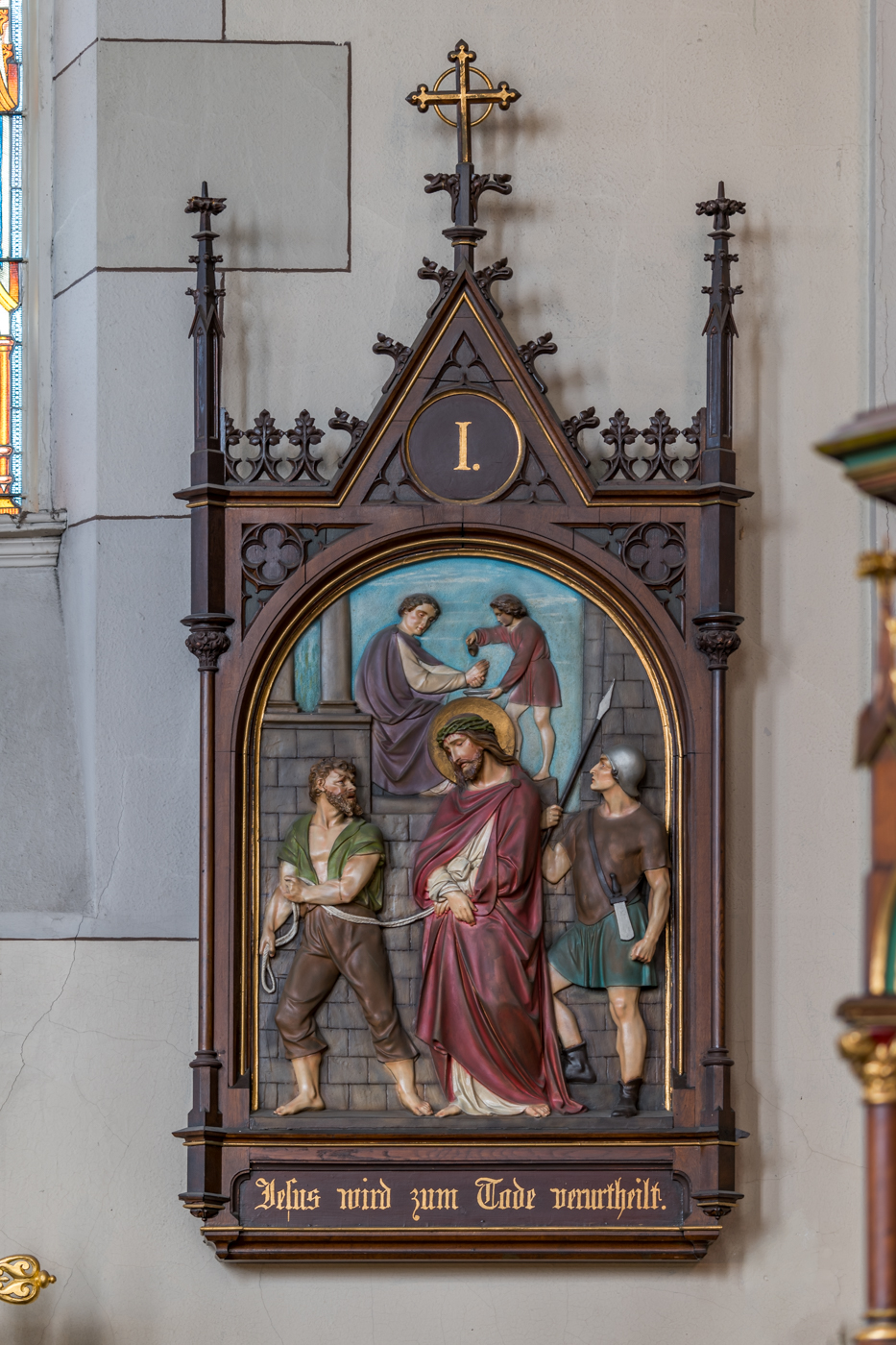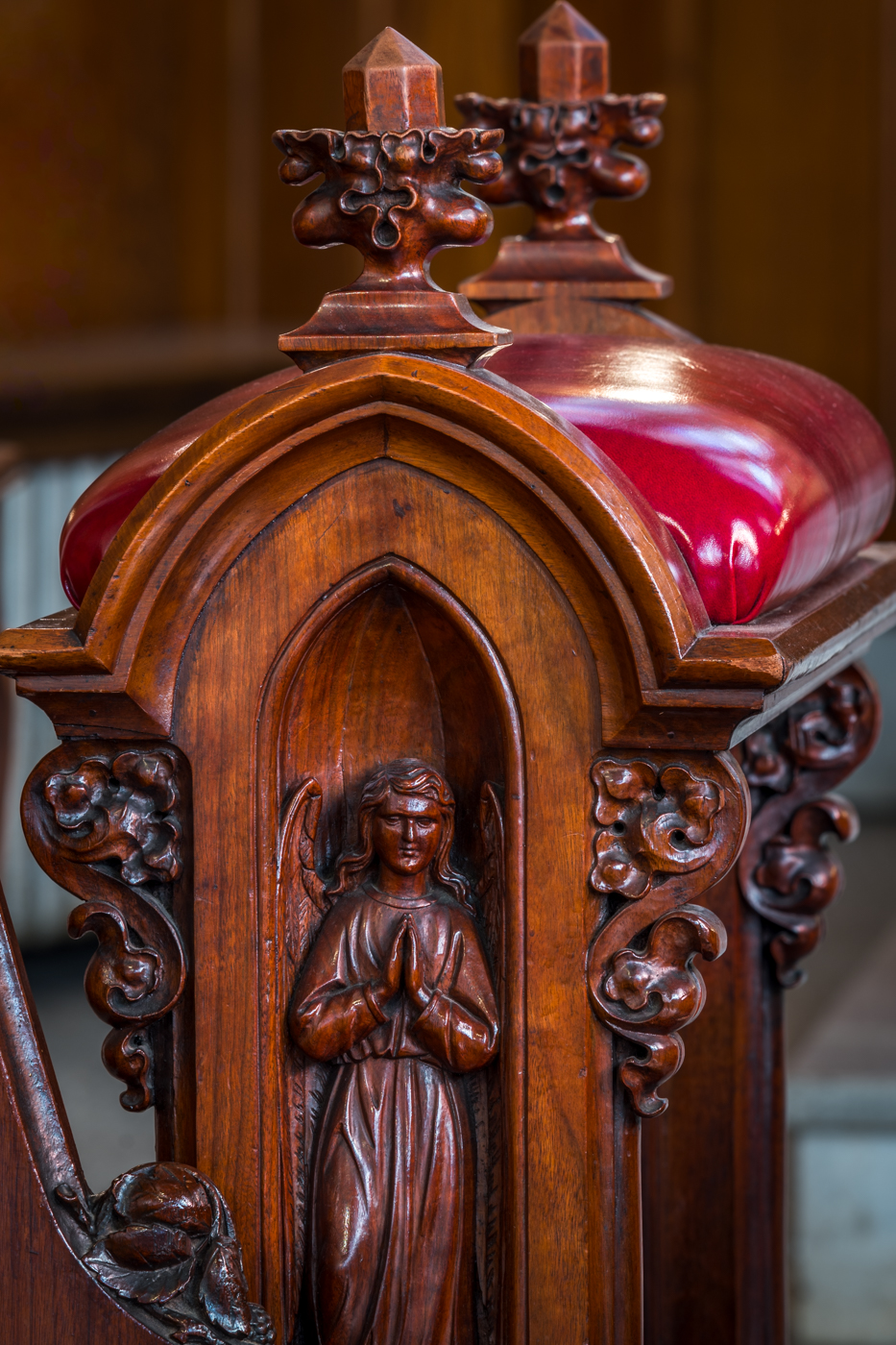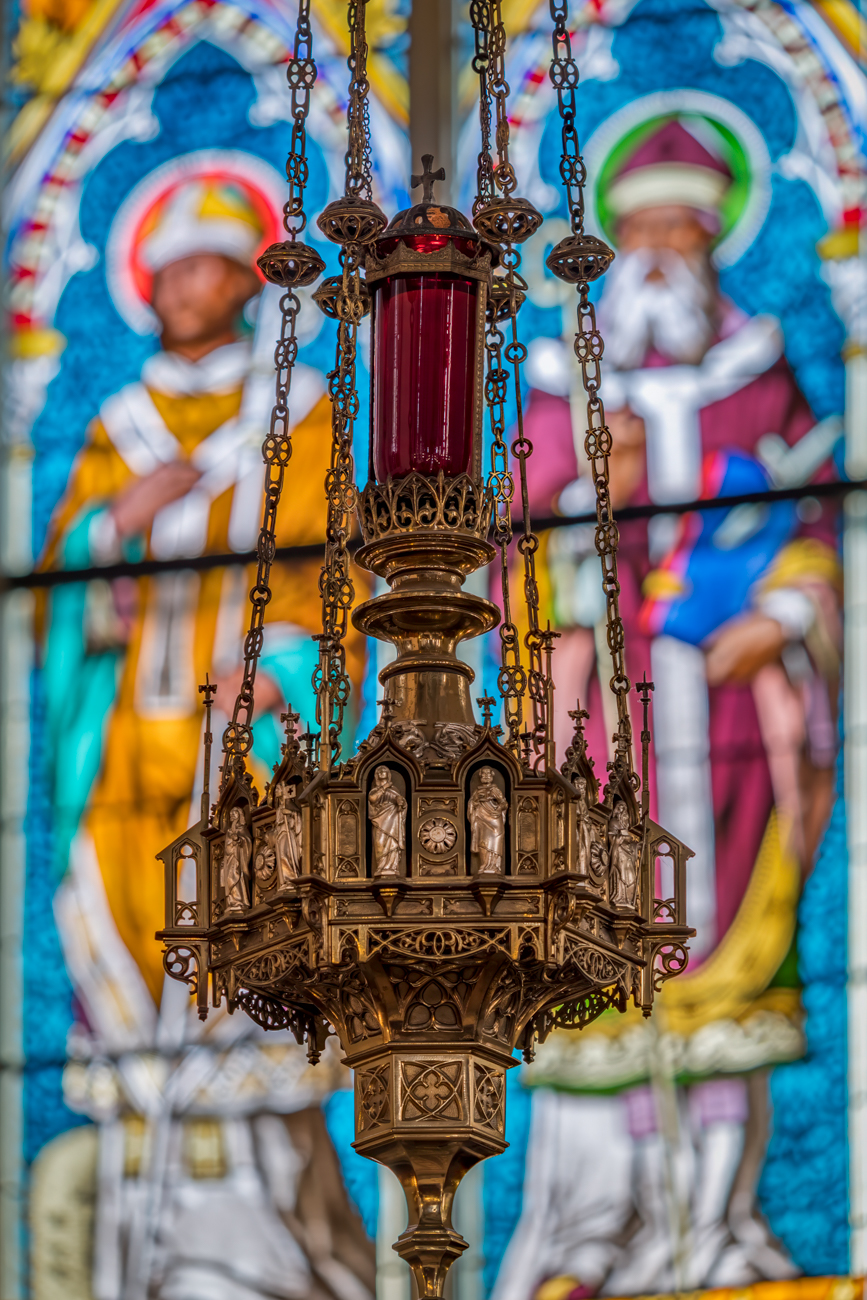St. Joseph Shrine - Photos
St. Joseph Shrine

St. Joseph was founded by German immigrants in 1856. In October 2016, Archbishop Allen H. Vigneron entrusted St. Joseph to the pastoral care of the Institute of Christ the King Sovereign Priest, to serve as a spiritual home in the Archdiocese of Detroit for those desiring to receive all of the sacraments in the extraordinary form of the Roman Latin Rite.

The Institute of Christ the King is a Society of Apostolic Life of Pontifical Right founded by Monsignor Gilles Wach and Canon Philippe Mora in 1990 in Gabon, Africa. Today the Institute operates in more than 80 locations in 12 countries, and the Motherhouse and International Seminary is in Gricigliano, Italy.

The original structure was a wooden frame church built at the corner of Gratiot and Orleans, but by 1869 it became clear that it was inadequate for the congregation. The present church, designed by Franz Georg Himpler, was begun in 1870. It is a magnificent and largely unaltered example of Victorian Gothic Revival at its best.

On the exterior, the church is compact and soaring. The walls are of Trenton limestone with sandstone trim, the roof of slate and copper. The height of the church itself, some eighty-five feet, is dwarfed by the tower and spire, about two hundred feet tall. The exterior as we see it now was not finished until 1911. The tower was completed only as high as the roof of the church in 1873; the octagonal portion of the tower was built in 1883 and the spire in 1892. Finally, in 1911, the pinnacles which surmount the walls were installed.

Inside, the church gives an impression of a single, soaring, space. Himpler chose as his model the "hall-church" of southern Germany, with all three naves of almost equal height. No one church seems to have provided the basis, but such churches as the Cathedral of Freiburg or the Minster in Ulm are brought to mind.

What truly makes St. Joe’s remarkable is its stained glass, which is a combination of imported and local artistry. The stained glass is so important, in fact, that the church was given the national level of significance by the National Register of Historic Places in 1972. It is the only church in Detroit with that distinction.

At the liturgical east end of the church, the chancel is enclosed with five tall, slender, stained glass windows; these are the most important cultural objects in the church, internationally known for their position in the history of European and American stained glass. Beneath the figures of Christ and Peter in the central window is the signature of Mayer of Munich, the world-famous stained glass makers. These 1873 windows are the oldest known Mayer glass in America.

But they are not entirely by Mayer, only the figures with their pedestals and bases came from Munich. The geometric designs in red, yellow, and blue above and below the figures were made by Friederichs & Staffin of Detroit, based on a design by architect Himpler

Other stained glass was bought in Detroit from the firm of Friederichs & Staffin, whose owners were parishioners.

The Death of St. Joseph Window in the south nave was imported from Innsbruck, Austria. The subject is one not usually depicted.

The rose window is a Friederichs family gift.

The rose window depicts Christ among saints.

The rose window depicts Christ among saints.

The rose window depicts Christ among saints.

The window of The Good Shepherd is a fitting memorial for the Reverend J. F. Friedland under whose direction St. Joseph and its parish came to full flowering. The Good Shepherd, adapted from the Roman sculpture of a shepherd boy and his lamb, is one of the oldest Christian symbols.

In the catacombs of Rome there is a Good Shepherd picture painted in the fourth century A.D., probably just before Emperor Constantine offi¬cially recognized Christianity. The figure of Christ represented in this window is typical in Detroit churches of this period, as Victorian Gothic stylistically favored the Renaissance figures rather than the stylized ones of the medieval Gothic period. Renaissance realism tended to become sentimental in the nine¬teenth century, and we see here Christ as a human being ten¬derly tending his flock. The Good Shepherd symbol is still a favorite one today and can be found in almost every church denomination in Detroit.

Note too the canopies and architecture filling the top of the window, a favorite design for tall windows for they admirably fill in space.

Some detail of the windows made by Friederichs & Staffin of Detroit

Some detail of the windows made by Friederichs & Staffin of Detroit

The window of The Good Shepherd and the rose window to the right, as seen from the opposite side of the church.

The window of The Good Shepherd and the rose window from a slightly different perspective.

The fittings of St. Joseph Shrine are especially noteworthy. In a period when much decoration was done by molding plaster, St. Joseph was built with carved wood ornament.

The altars, numerous statues, four confessionals, and high pulpit are all of wood, without cast ornament.

Many of the decorations were imported from Germany

Many of the decorations were imported from Germany - the high altar, almost all the statues, and the stations of the cross.

Station 1: Jesus is condemned to death

Station 2: Jesus is made to bear his cross

Station 3: Jesus falls the first time

Station 4: Jesus meets his mother

Station 5: Simon of Cyrene is made to bear the cross

Station 6: Veronica wipes Jesus’ face

Station 7: Jesus falls the second time

Station 8: the women of Jerusalem weep over Jesus

Station 9: Jesus falls the third time

Station 10: Jesus is stripped of his garments

Station 11: Jesus is nailed to the cross

Station 12: Jesus dies on the cross

Station 13: Jesus is taken down from the cross, and

Station 14: Jesus is placed in the sepulchre

Other decorative items were made in Detroit, partly by a craftsman named Anthony Osebold, who belonged to the parish.

More examples of carved wood ornaments

More examples of carved wood ornaments

More examples of carved wood ornaments

More examples of carved wood ornaments

Sacred music has always been of great importance at St. Joseph, and the acoustics are outstanding.

The church was dedicated on November 16, 1873, with a Mass by Haydn presented by the choir and the Detroit Opera House orchestra. The original organ was built in 1873 by J.H. & C.S. Odell of New York

The case, however, was built in Detroit by William Mayer. It is the last 19th century case in Detroit to remain unaltered; even the original stenciling of the facade pipes survives. The organ itself, however, went through many changes over the years. In honor of the centennial of the church building, a new instrument was installed using many pipes from the Odell.

Between 1900 and 1915, the floor of marble mosaic was laid and the brass light fixtures were installed.

Between 1900 and 1915, the floor of marble mosaic was laid and the brass light fixtures were installed.

The church truly gives an impression of a single, soaring, space.

All brass light fixtures were installed between 1900 and 1915.

All brass light fixtures were installed between 1900 and 1915.

Some detail of the high altar

Detail shot of the Brass Altar Hanging Sanctuary Lamp

Another detail shot of the Brass Altar Hanging Sanctuary Lamp

St. Matthias sculpture

Saint Bartholomew sculpture

Saint Andrew sculpture

Another look at the interior of this stunningly beautiful and historic church.

A look at the exterior from a distance

St. Joseph Shrine on a sunny Sep 2023 morning